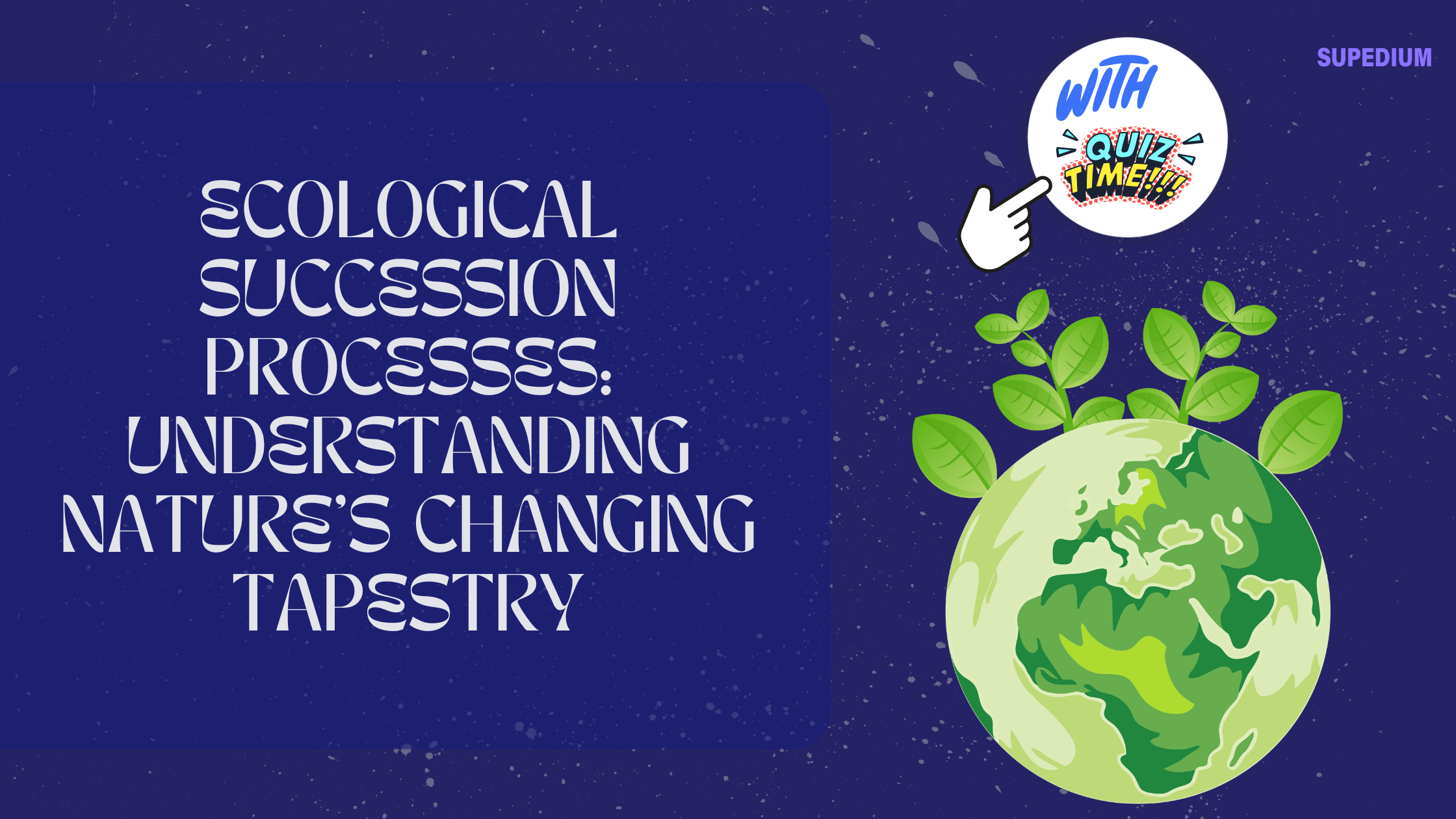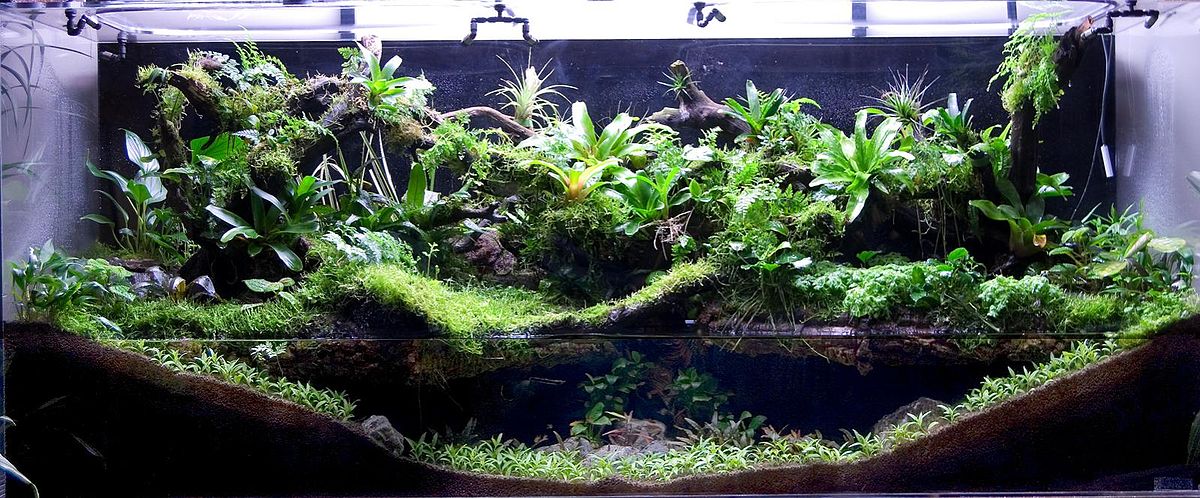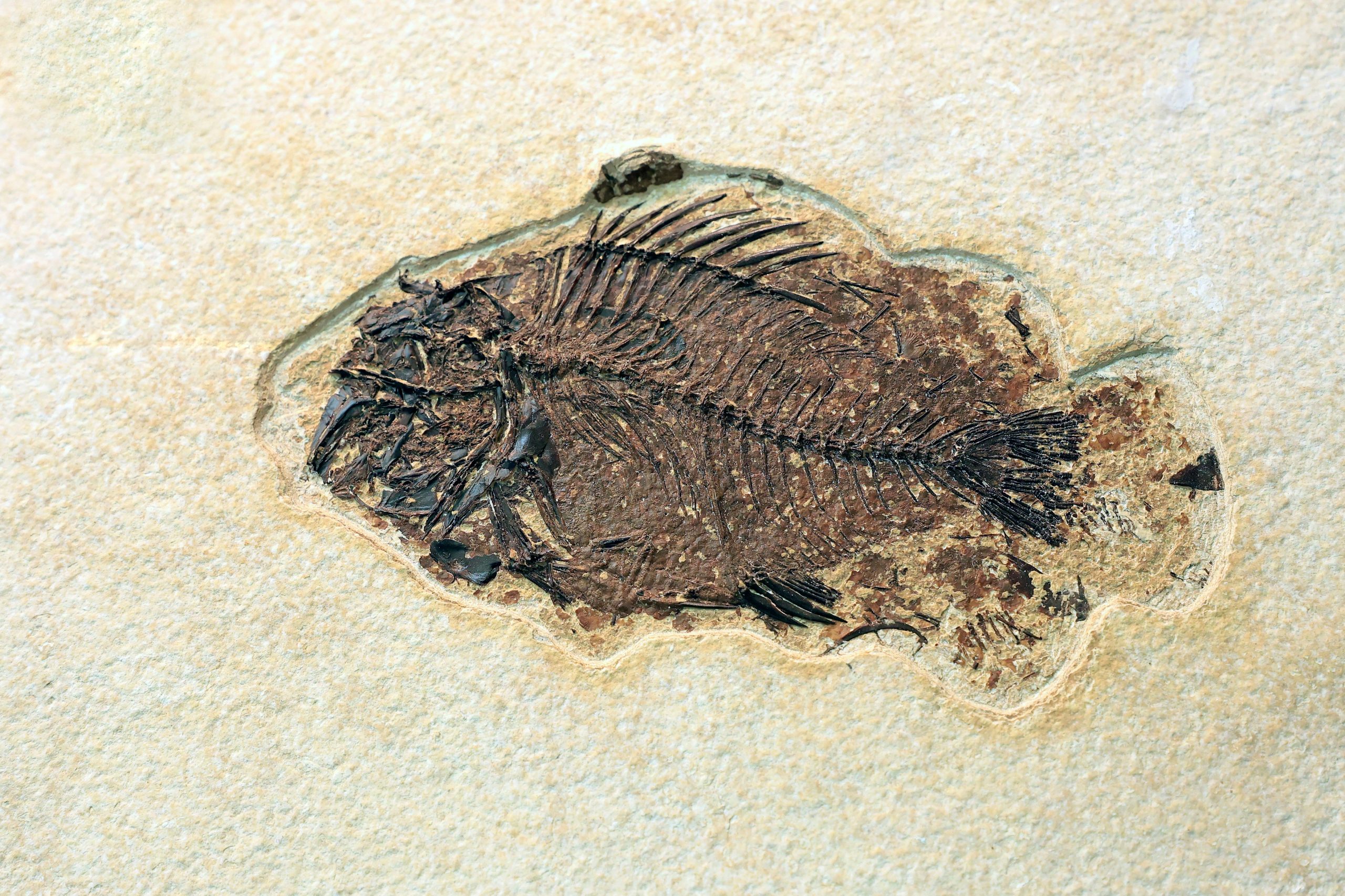Table of Contents
![]()
Ecological succession is a fundamental concept in ecology that describes the gradual process of change in the species composition and structure of an ecosystem over time. This dynamic process involves the transformation of ecological communities from one state to another, ultimately leading to a mature and stable ecosystem known as the climax community. Understanding ecological succession is crucial for effective ecosystem management, conservation efforts, and addressing environmental challenges.
Types of Ecological Succession
Ecological succession is typically categorized into two main types: primary and secondary succession.
Primary Succession
Primary succession occurs in environments where no soil exists initially, such as on newly formed volcanic islands, retreating glaciers, or barren sand dunes. The process begins with the colonization of pioneer species that are specially adapted to harsh, soil-less conditions. These pioneers include lichens, mosses, and certain bacteria that can survive in extreme environments. They play a crucial role in soil formation by breaking down rock surfaces and contributing organic matter.
As pioneer species establish themselves, they gradually modify the environment, making it more hospitable for other species. This leads to the intermediate stage, where grasses and shrubs begin to grow. The accumulation of organic matter and the development of soil create conditions suitable for a wider range of plants and animals.
Over time, the ecosystem progresses towards a climax community—a stable, mature ecosystem characterized by a complex structure and diverse species. In temperate regions, this often results in the establishment of a forest community dominated by long-lived trees and a well-developed soil layer.
Secondary Succession
Secondary succession takes place in areas where a disturbance has altered the existing community but left the soil intact. Examples include abandoned agricultural fields, areas affected by forest fires, or clear-cut forests. Unlike primary succession, secondary succession begins with an existing soil layer that already contains seeds, organic matter, and microorganisms.
The process of secondary succession starts with early colonizers such as grasses and herbaceous plants that quickly establish themselves in the disturbed area. This is followed by the growth of shrubs and small trees as the soil improves in fertility and depth. As the ecosystem continues to develop, it transitions to a climax community, which may closely resemble the original community before disturbance, depending on the severity and type of disturbance.
Stages of Ecological Succession
Both primary and secondary succession follow a series of stages that reflect changes in species composition and ecosystem structure.
Primary Succession Stages
- Pioneer Stage: The initial stage involves the colonization of bare rock or other lifeless environments by pioneer species. These organisms are hardy and capable of surviving in harsh conditions. They contribute to soil formation by breaking down rock and accumulating organic matter from their own decay.
- Intermediate Stage: As soil develops and becomes more fertile, grasses, herbaceous plants, and small shrubs begin to grow. The increased vegetation supports a wider range of animal species and leads to further soil development. This stage is characterized by increased biodiversity and more complex interactions among species.
- Climax Community: The climax community represents the final stage of succession, where the ecosystem reaches a stable state. In temperate regions, this often means the establishment of a mature forest with a diverse array of plant and animal species. The climax community is relatively stable and resilient to minor disturbances.
Secondary Succession Stages
- Early Colonizers: The first species to colonize a disturbed area are typically fast-growing plants that can quickly take advantage of the available resources. These early colonizers help to stabilize the soil and prepare the environment for more complex plant species.
- Intermediate Stage: As the ecosystem develops, shrubs and small trees start to grow. The increasing vegetation leads to greater biodiversity and the establishment of more complex food webs. Soil depth and fertility continue to improve, supporting a wider range of species.
- Climax Community: Similar to primary succession, secondary succession eventually leads to a climax community. This mature ecosystem is characterized by a stable and diverse array of species that are adapted to the local environmental conditions. The community reaches a state of equilibrium where species interactions and environmental conditions are balanced.
Factors Influencing Ecological Succession
Several factors influence the rate and trajectory of ecological succession, including both abiotic and biotic elements.
Abiotic Factors
- Climate and Weather Patterns: Temperature, precipitation, and seasonal variations affect the types of species that can thrive in a given area. Changes in climate can also alter the rate of succession and the composition of climax communities.
- Soil Composition and Fertility: The availability of nutrients, soil texture, and soil depth influence plant growth and the overall development of the ecosystem. Soil formation and improvement are key aspects of succession.
- Water Availability and Quality: Water plays a crucial role in plant growth and the development of aquatic and terrestrial ecosystems. Variations in water availability can impact the rate of succession and the types of species that establish themselves.
- Topography and Disturbance Regimes: The physical landscape and the frequency and intensity of disturbances (e.g., fires, floods) shape the succession process. Different topographical features can create microhabitats that influence species composition.
Biotic Factors
- Species Interactions: Interactions such as competition, predation, and mutualism affect the establishment and growth of species. These interactions can influence the direction and pace of succession.
- Seed Dispersal Mechanisms: The ability of species to disperse their seeds to new areas is crucial for succession. Different species have various dispersal strategies, including wind, water, and animal-mediated dispersal.
- Species Traits and Adaptations: The characteristics of species, such as their tolerance to environmental conditions and their ability to alter their surroundings, influence their success during succession.
- Human Activities: Human-induced changes, such as land development, agriculture, and pollution, can significantly impact succession processes. These activities can either accelerate or hinder natural succession and lead to changes in species composition and ecosystem structure.
Models of Ecological Succession
Several models have been proposed to explain the dynamics of ecological succession, each offering different perspectives on how ecosystems change over time.
Clementsian Model
The Clementsian model, named after the ecologist Frederic Clements, posits that succession is a predictable and orderly process leading to a stable climax community. According to this model, ecosystems progress through a series of well-defined stages, each characterized by specific species and environmental conditions. The climax community represents a final, stable state where species interactions and environmental factors are in equilibrium.
Gleasonian Model
In contrast, the Gleasonian model, proposed by ecologist Henry Gleason, suggests that succession is a more unpredictable and individualistic process. According to this model, succession results from a combination of species’ responses to environmental conditions and random events. The composition of the climax community can vary based on the specific circumstances of each succession event, leading to a more flexible and less deterministic view of ecological change.
Alternative Stable States Model
The alternative stable states model introduces the concept of multiple stable states for an ecosystem, depending on initial conditions and disturbances. This model suggests that ecosystems can exist in different stable configurations, each with its own set of species and structural characteristics. The transition between states can be influenced by factors such as disturbances, species invasions, and changes in environmental conditions.
Human Impacts on Ecological Succession
Human activities have significant effects on ecological succession, often altering or disrupting natural processes.
Land Use Changes
Urbanization, industrial development, and agricultural practices can modify landscapes and disrupt natural succession. These changes often result in habitat loss, fragmentation, and the introduction of non-native species, all of which can impact the rate and trajectory of succession.
Climate Change
Climate change affects ecological succession by altering temperature, precipitation patterns, and other climatic factors. Changes in climate can influence species distributions, growth rates, and community structures, potentially leading to shifts in the composition and stability of climax communities.
Invasive Species
Invasive species can disrupt natural succession processes by outcompeting native species, altering habitat structures, and changing ecological interactions. The presence of invasive species can lead to changes in succession trajectories and the establishment of new community types that differ from natural climax states.
Applications and Implications
Understanding ecological succession has practical applications in ecosystem restoration, conservation, and research.
Ecosystem Restoration
Ecosystem restoration aims to promote the recovery of degraded ecosystems by supporting desired stages of succession. Restoration techniques include replanting native species, removing invasive species, and managing disturbances. Successful restoration projects often involve careful planning and monitoring to ensure that ecosystems progress toward desired climax communities.
Conservation Strategies
Conservation efforts focus on protecting natural successional processes and maintaining ecosystem resilience. Strategies include preserving natural habitats, mitigating human impacts, and promoting sustainable land use practices. By supporting natural succession, conservationists can help ecosystems adapt to changes and maintain their ecological functions.
Research and Monitoring
Research on ecological succession provides valuable insights into the dynamics of ecosystem change. Long-term monitoring of succession processes helps scientists understand how ecosystems respond to disturbances, climate change, and other factors. This knowledge is essential for informed decision-making and effective management of natural resources.
Conclusion
Ecological succession is a dynamic and complex process that shapes the structure and composition of ecosystems over time. By understanding the types, stages, and influencing factors of succession, we gain valuable insights into the natural world and our role in managing and conserving it. As human impacts continue to influence ecosystems, a deep understanding of succession processes will be crucial for addressing environmental challenges and promoting sustainable practices. Through continued research and informed management, we can support the resilience and adaptability of ecosystems, ensuring their health and functionality for future generations.




